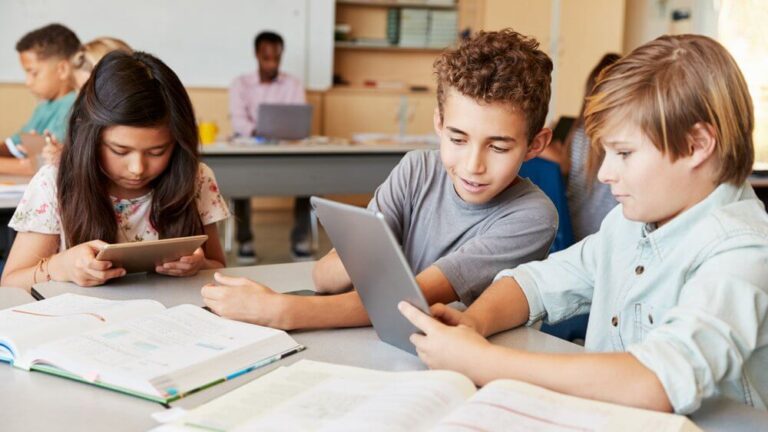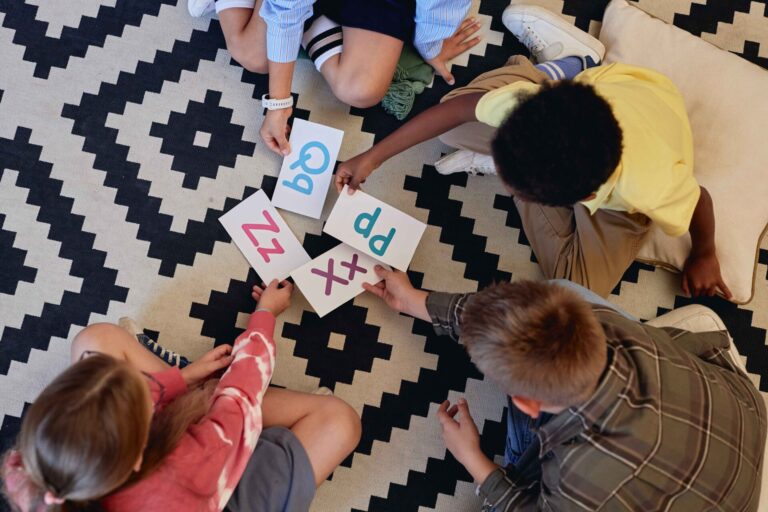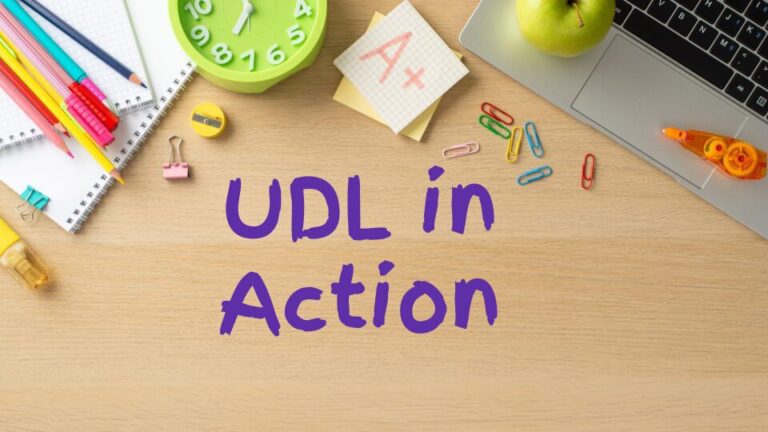Outside the home, the place many children spend the majority of their time is the classroom. Each school year, students are greeted by a new teacher and new group of classmates. A new community that shapes the year ahead.
A positive classroom community helps students feel like they belong. When students feel included and valued for who they are and where they come from, they feel more ownership over their learning, more confident to take risks, and more motivated to form meaningful relationships.
HOW DO YOU BUILD A POSITIVE CLASSROOM COMMUNITY?
Classroom community isn’t something that can be built in a day. It doesn’t have to take over your entire schedule, either. (After all, there’s a lot to teach!) Rather, classroom community can be fostered through intentional moments woven throughout the day.
The following are three quick routines that fit into most daily schedules. Though each only takes a few minutes, they add up over time to create a classroom community where all students can be their best.
 MORNING CHECK IN
MORNING CHECK IN
As students arrive each morning, there’s often a chunk of time – between unpacking and the start of the first lesson – that’s perfect for a morning check in.
When students walk through the classroom door, they often arrive with more than just their backpacks. They carry all the feelings and experiences from previous days, from home, from interactions with friends, from all parts of their lives.
Sometimes, it’s difficult to see what students are bringing in with them each day. Helping students feel safe to share their feelings and experiences is key to building a positive classroom community. A morning check in can be a safe space for students to open a window into what’s going on inside.
How to Start a Morning Check In Routine
- Share a list of common feelings on the board or in Seesaw.
Pro tip: Include emojis as a helpful visual!
- Students choose from the list or name/draw their own feeling.
- Provide space for students to share why they feel that way.

At first, students might be hesitant to share their real feelings. That’s ok! This alone doesn’t create open, trusting relationships between students and teachers.
Yet, as students and teachers build relationships, this morning check in routine can become an important part of the day that students rely on to share and receive support. Just a few minutes at the start of the school day can remind students that their classroom community is a place where they belong, exactly as they are.
COLLABORATIVE BRAIN BREAKS
We all need breaks throughout the day. Breaks are even more important for students, whose brains are still developing in key areas that manage executive function, attention, and impulse control.
Research shows that short, regular breaks make students more focused, more productive, and less stressed. Building in breaks throughout the day actually results in more learning!
How can brain breaks support classroom community? By planning activities that get students interacting with one another.
Collaborative brain breaks not only allow students to shift focus for a few minutes, they also offer low-stakes ways for students work together, communicate, and build trust – key components of any community.
5 Collaborative Brain Breaks to Try
- The Atom Game: Call out different ways for students to move around the room (e.g. like dinosaurs, hopping on one foot, like a zombie). Call out a number and the word ‘Atom’. Students must quickly join into groups of that number. Any stray ‘atoms’ are out. Play until there are 2 students left.
- Common Thread: In groups of 3-4, students have to find something they all have in common before time runs out. Share out each group’s common thread.
- Popcorn: One student says ‘Pop!’ and stands up. Another student says ‘Pop!” and stands up. If multiple students say ‘Pop!” at the same time, everyone sits down and the game starts over. Play for a set period of time or until the entire class is standing. Mix it up! Play by skip counting, saying the alphabet, or spelling a vocabulary word.
- Connect This: Show 4 (or more!) photos of items on the board. In pairs or small groups, students work together to figure out a way to categorize them. Share out each group’s answer and reasoning.
- Simon Says: It’s a classic game for a reason! Choose a different student each time to be ‘Simon’. Consider offering a stack of cards with different commands, or students can make up their own.
Or try your favorite games that get students moving, talking, and having fun together!
Once you teach a brain break to students, it’s quick to mix it into the day. Consider adding a brain break when students transition from the rug back to their desks, in between subjects, before a high-focus task, or any time you notice students start to zone out. Remember, allowing students time to shift their focus, even for a few minutes, helps them process what they just learned and focus on the next task. Don’t be afraid to interrupt a lesson if you feel students need it.
Take it a step further: Follow up these collaborative brain breaks with a quick turn and talk. What went well? What was fun? What could be better next time?
Collaborative brain breaks give students authentic ways to interact with classmates they might not get a chance to otherwise. This builds relationships that contribute to a positive classroom community.
TIME TO SHARE
Providing opportunities for students to share their voice is another way to foster a positive classroom community.
When their needs, ideas, and opinions are valued, students feel a greater sense of belonging and trust in their classroom community. Teachers can support this by designating time for students to share about themselves and their ideas for the classroom.
It’s common at the beginning of the year to assign “All About Me” activities. But why stop there? Students are growing and changing throughout the year! Plus, it takes time to really get to know someone. Regularly engaging in “Getting to Know You” activities helps students move past first impressions and learn that people can surprise you.
These activities also allow teachers to learn more about their students, which can spark the strong teacher-student relationships at the core of positive classroom communities.
In addition to sharing about themselves, students also benefit from sharing their ideas to help shape the classroom. It’s common in many classrooms for teachers and students to co-create class rules. Teachers can extend the power of this exercise by asking students for their input throughout the year. How are the class rules working? What should change? Should any new rules be added?
Teachers can also integrate choice into day-to-day classroom tasks. Use popsicle sticks with students’ names to select a student to choose which game to play at recess or what song to dance to for a brain break. Allow students to vote on the next read aloud book or the reward for reaching a goal. Even small choices can build student agency and motivate active participation in the classroom community.
Adding morning check ins, collaborative brain breaks, and time to share only takes up a few minutes of the day. Yet these moments add up over time to foster positive classroom communities where students feel included, valued, and accepted for who they are.
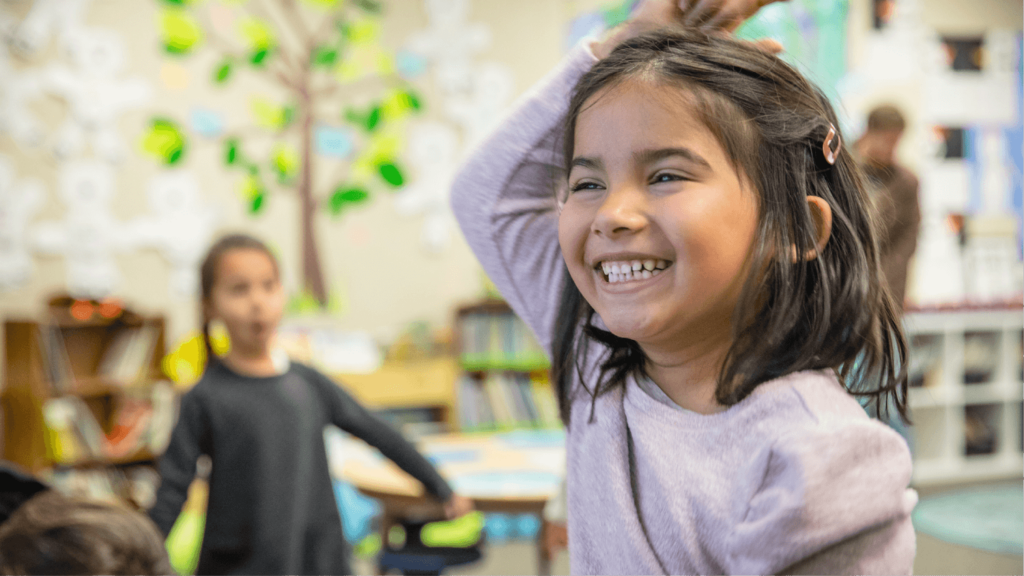
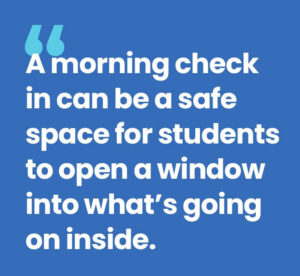 MORNING CHECK IN
MORNING CHECK IN